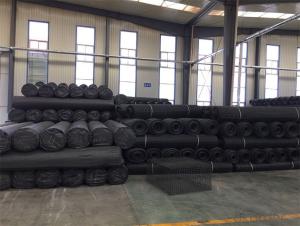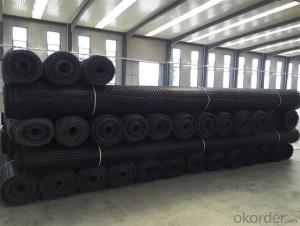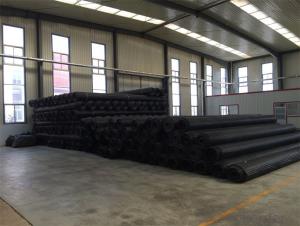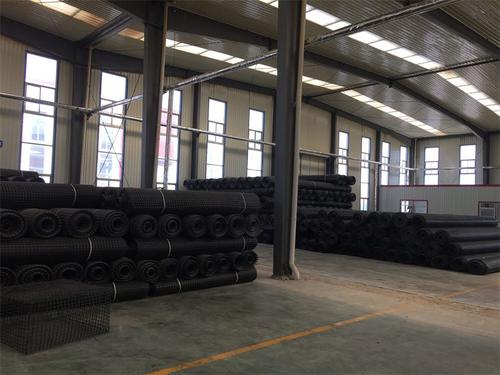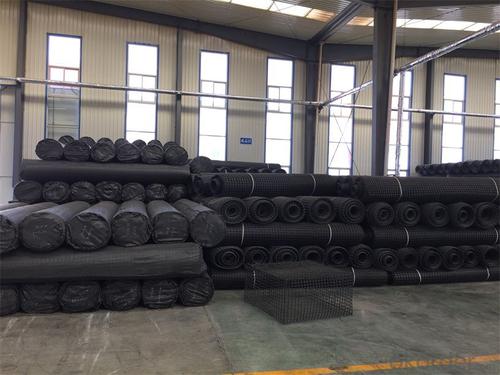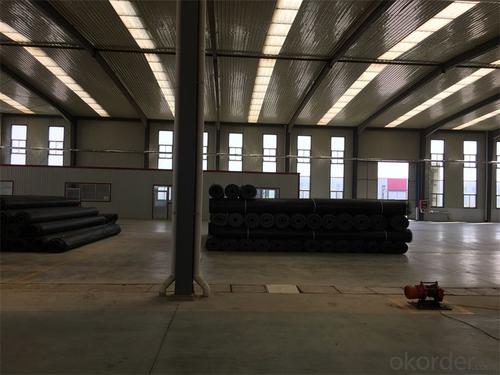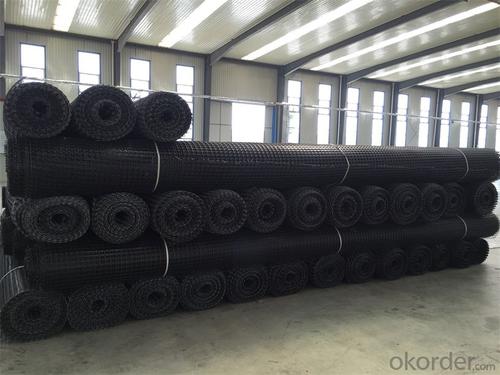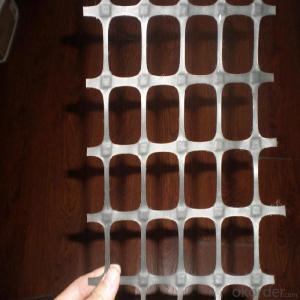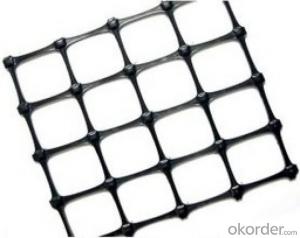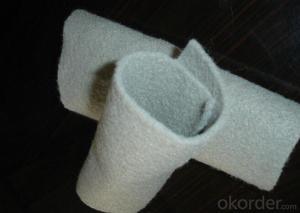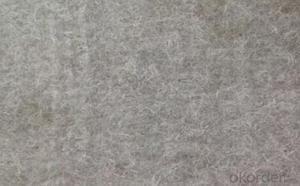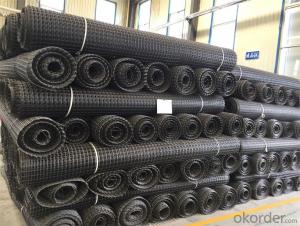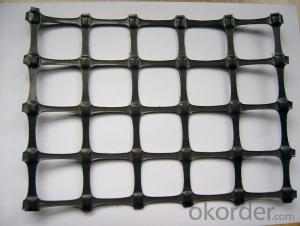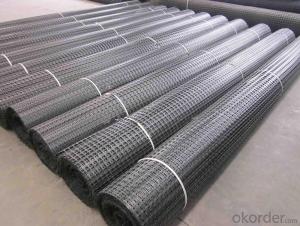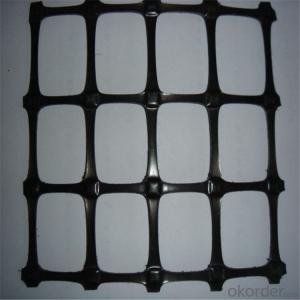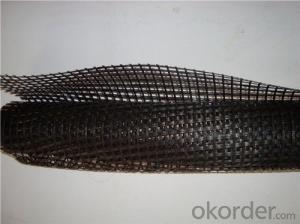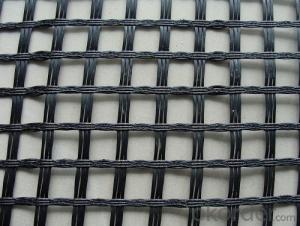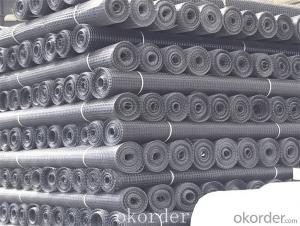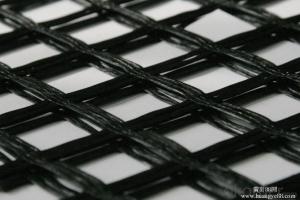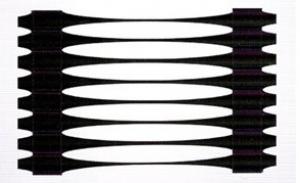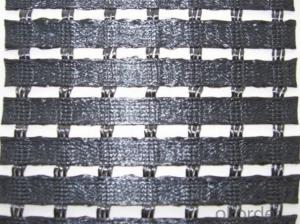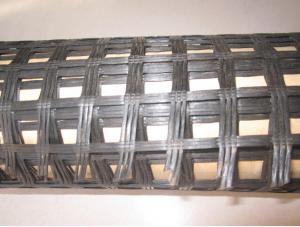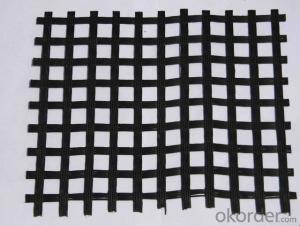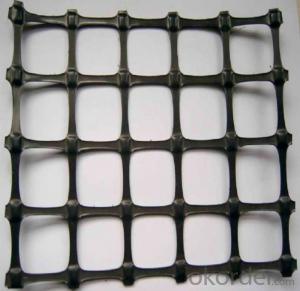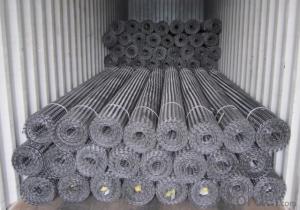Geogrids Que Son PP Biaxial Plastic Geogrids with Low Tensile Strength
- Loading Port:
- Tianjin
- Payment Terms:
- TT OR LC
- Min Order Qty:
- 20000 m²
- Supply Capability:
- 50000000 m²/month
OKorder Service Pledge
OKorder Financial Service
You Might Also Like
Fiberglass Geogrid Introduction:
Fiberglass geogrid is a kind of planar mesh material using alkali-free fiberglass yarn as base body and then coated with high quality modified asphalt. It is warp knitted with oriental structure which gives full play of yarn strength and improves its mechanical property to make the product high tensile, tearing and creep-resistant. Moreover, the composite property of coating with asphalt makes full protection of the fiberglass matrix and greatly improves its wear and shear resistance. All the advantageous functions make the product have a good performance in pavement strengthening, track cracking and solving difficulties of strengthening the bituminous pavement.
Fiberglass Geogrid Features:
1. Light weight, high tensile strength, high modulus, low elongation and good toughness.
2. Corrosion resistance, no long-term creep, long life span.
3. Good physical and chemical stability and good thermal stability.
4. Resistant to fatigue cracking, high-temperature track and low temperature shrinkage cracking.
5. Delaying and decreasing crack reflection.
Specifications | PET20-20 | PET30-30 | PET40-40 | PET50-50 | PET80-80 | PET100-100 | PET120-120 |
Elongation(%) | 10%~15% | ||||||
Vert Tensile strength(KN/m) | 20 | 30 | 40 | 50 | 80 | 100 | 120 |
Horiz Tensile strength(KN/m) | 20 | 30 | 40 | 50 | 80 | 100 | 120 |
Grid(mm) | 12.5×12.5 20×20 24.5×24.5 | ||||||
Width(m) | 1—6 | ||||||
Fiberglass Geogrid Application:
1. Road surface asphalt overlay construction engineering; Asphalt layers
reinforcement.
2. Converting old cement concrete road into composite road; Restraining
reflection cracking caused by block shrinkage.
3. Road extension; Preventing and controlling the cracking caused by new
and old combination and uneven settlement.
4. Treatment of the conjunction between tunnel and bridge or foundation.
Packaging & Shipping:
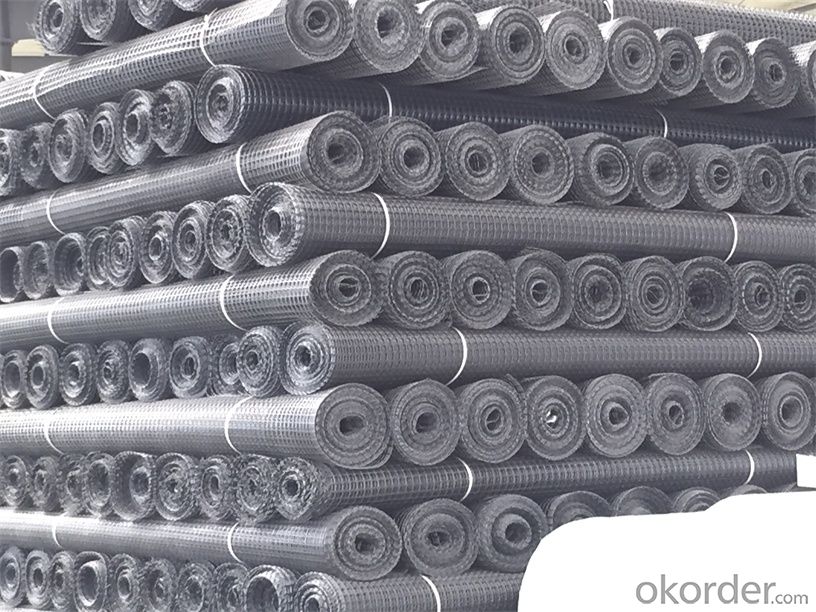
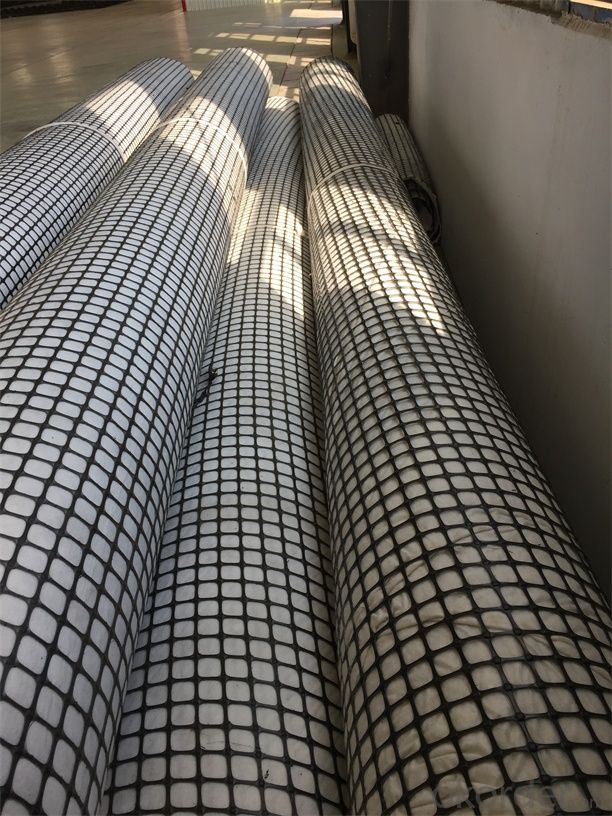
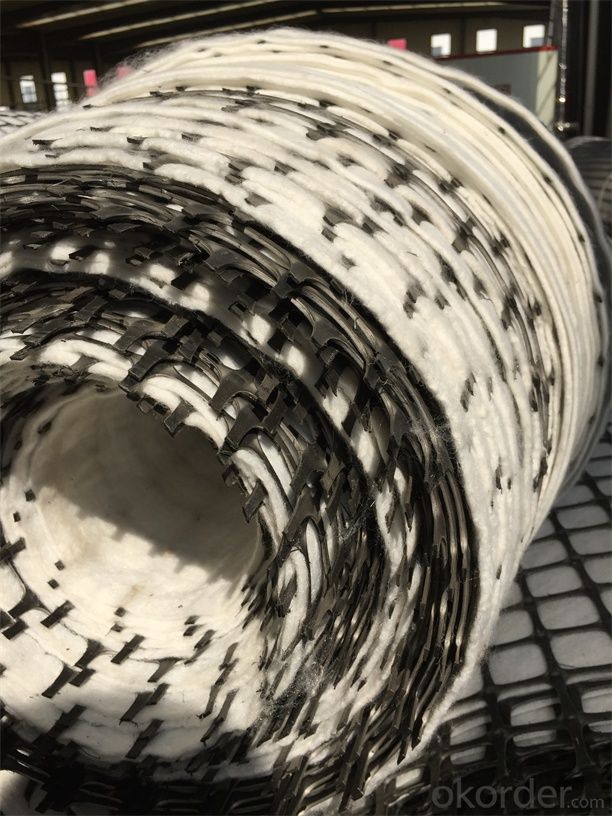
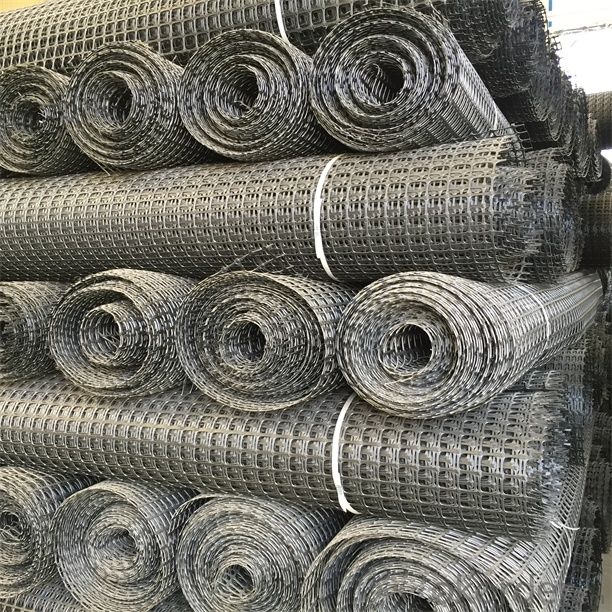
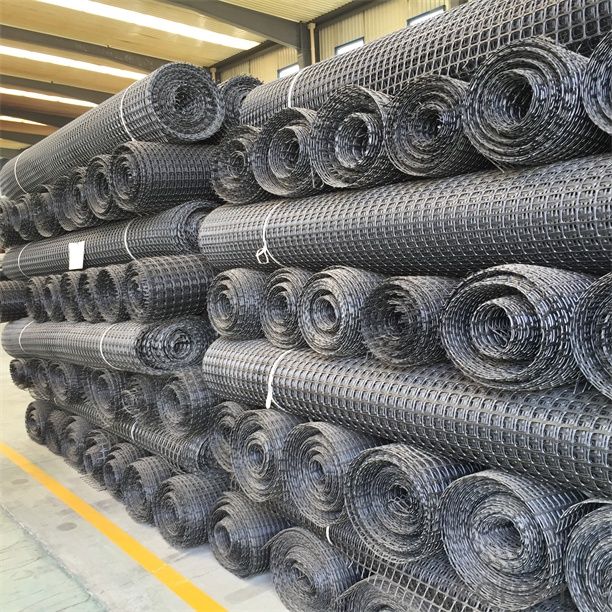
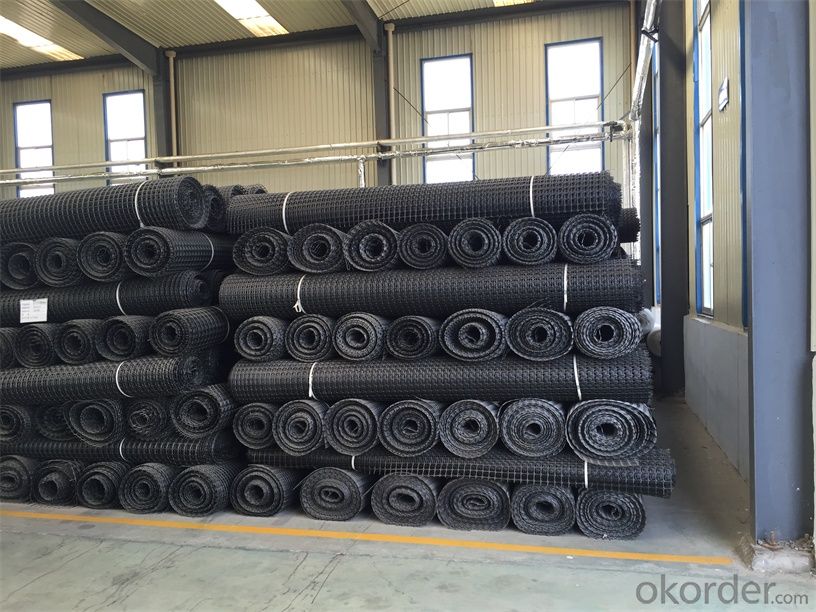
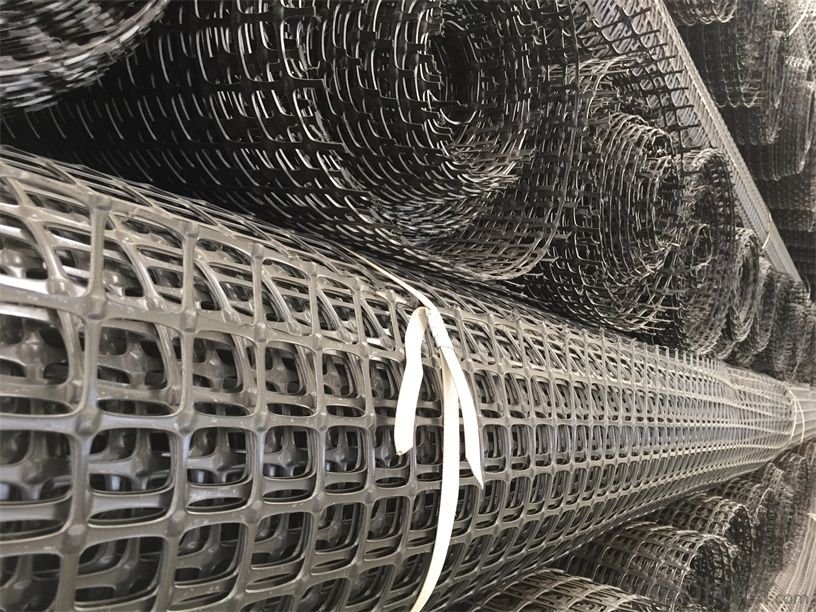
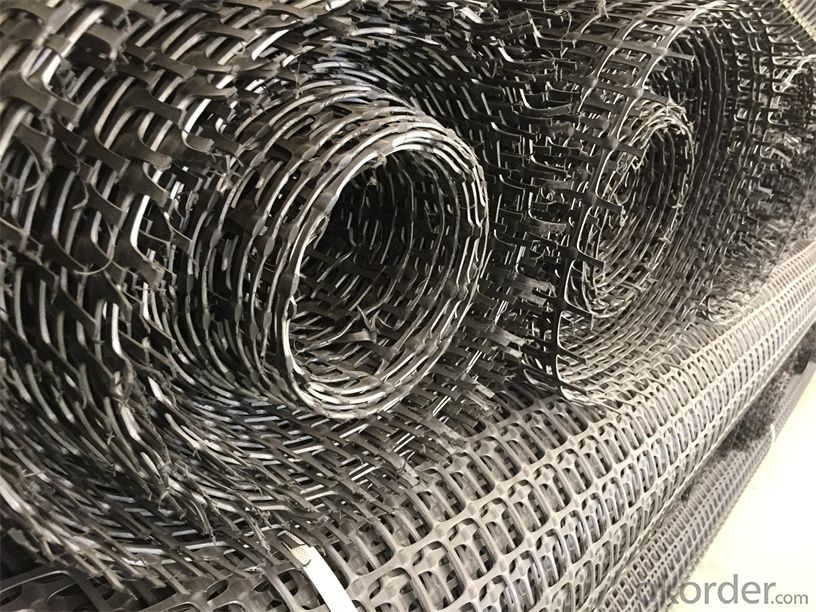
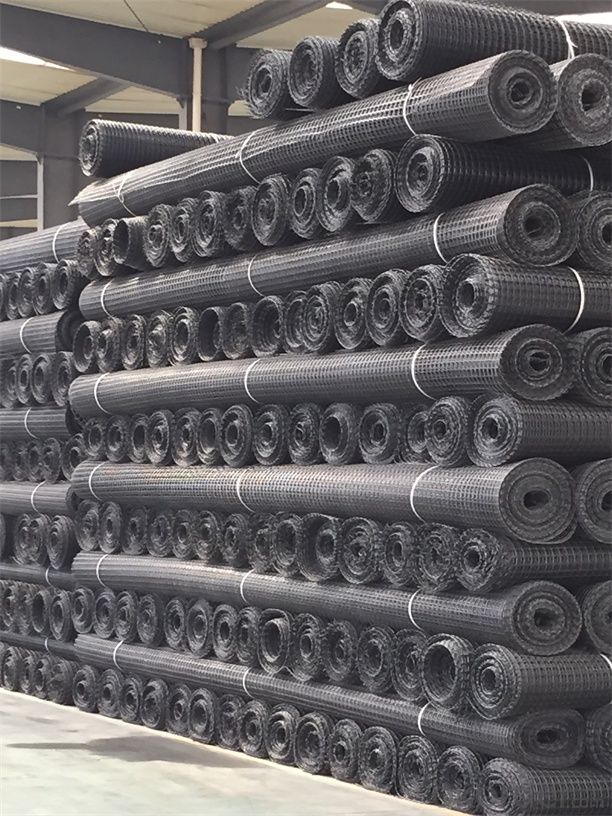
FAQ:
1. How to order your geogrid ?
a) Tensile strength in warp & weft direction
b) Grid size
c) Roll Width and length
d) Quantity
2. What is the Payment term?
a) TT
b) LC AT SIGHT
c) cash
d) 30% contact value as deposit ,the blance 70% be paid after received the copy of bl .
3. Delivery time
a) 19-25 days after received your depsit .
4. What is MQQ ?
a) 2500 m2 as MQQ , we can also produce sample for you .
Welcome to send your inquiry to us, and if you have any question, we can also help you.
- Q: Can geogrids be used in reinforcement of concrete structures?
- Yes, geogrids can be used in the reinforcement of concrete structures. Geogrids are high-strength synthetic materials that are commonly used to enhance the stability and strength of various civil engineering projects, including concrete structures. They are typically embedded within the concrete to provide additional tensile strength and prevent cracking or failure. Geogrids are particularly effective in applications where there is a need for increased load-bearing capacity, such as road and bridge construction.
- Q: What are the design guidelines for geogrid-reinforced retaining walls?
- The design guidelines for geogrid-reinforced retaining walls include factors such as the type and strength of the geogrid, the wall height, soil properties, and the required level of stability. The guidelines typically emphasize the need for proper engineering analysis, considering factors such as internal and external stability, soil-geogrid interaction, and construction considerations. It is important to follow industry standards and consult with a qualified engineer to ensure a safe and effective design for geogrid-reinforced retaining walls.
- Q: How do geogrids enhance the stability of steep road embankments?
- Geogrids enhance the stability of steep road embankments by providing reinforcement to the soil. They are installed within the embankment to distribute the tensile forces and prevent soil erosion or slippage. The geogrids act as a stabilizing layer, improving the overall strength and integrity of the embankment, making it more resistant to lateral movement and increasing its load-bearing capacity.
- Q: What is the recommended geogrid aperture size?
- The recommended geogrid aperture size depends on various factors such as the specific application, soil conditions, and engineering requirements. It is best to consult with a geotechnical engineer or a specialist in geogrid design to determine the appropriate aperture size for a particular project.
- Q: What is the road geogrid
- brief introductionGeogrid: GeogridGeogrid is a kind of main geosynthetics, which has unique properties and effects compared with other geosyntheticsGeogrid is often used as reinforcement of reinforced soil structure or composite materialGeogrid is divided into four categories: plastic geogrid, steel plastic geogrid, fiberglass geogrid and polyester warp knitted polyester geogrid
- Q: Construction technology of steel plastic grille
- (6) in the third layer (coarse sand) after rolling, along the line in the longitudinal slope on both sides of the geogrid two, overlapping 0.16m, and connected with the same method, and then start the earthwork construction work, laying geogrid in slope protection, each layer must measure the laying of lines, each side to ensure the slope renovation of geogrid buried in slope soil 0.10m.(7) when the geogrid is filled with two layers of soil, that is to say, the thickness of 0.8m is required to lay a layer of geogrid at the same time on both sides, and so on.(8) the Subgrade after timely slope renovation, and dry rubble slope protection, in addition to each side of the roadbed widening 0.3m, and set aside 1.5% of the settlement.
- Q: What are the different types of geogrids available?
- There are several different types of geogrids available, including uniaxial geogrids, biaxial geogrids, and triaxial geogrids. Uniaxial geogrids are designed to primarily provide tensile strength in one direction, while biaxial geogrids offer strength in both directions. Triaxial geogrids, on the other hand, provide strength in all three directions. Each type of geogrid is used for specific applications depending on the desired level of reinforcement required.
- Q: What are the design considerations for geogrids in reinforced soil slopes?
- Some design considerations for geogrids in reinforced soil slopes include the type and strength of the geogrid material, proper installation techniques, adequate spacing and orientation of the geogrid layers, and the required length and width of the geogrid reinforcement. Additionally, factors such as the soil properties, slope geometry, and anticipated loads must be considered to ensure the geogrids can effectively stabilize the slope and prevent soil erosion or failure.
- Q: Do geogrids provide reinforcement to geosynthetic asphalt liners?
- Yes, geogrids provide reinforcement to geosynthetic asphalt liners. Geogrids are commonly used in combination with geosynthetic asphalt liners to enhance the structural integrity and load-bearing capacity of the liner system. They help distribute loads, reduce stress, and improve the overall performance of the asphalt liner.
- Q: How do geogrids help in reducing the need for excavation and grading?
- Geogrids help in reducing the need for excavation and grading by providing reinforcement and stabilization to the soil. They are typically installed within the soil layers to enhance its strength and prevent erosion. By distributing the load and increasing the bearing capacity of the soil, geogrids minimize the requirements for extensive excavation and grading, saving time and costs in construction projects.
Send your message to us
Geogrids Que Son PP Biaxial Plastic Geogrids with Low Tensile Strength
- Loading Port:
- Tianjin
- Payment Terms:
- TT OR LC
- Min Order Qty:
- 20000 m²
- Supply Capability:
- 50000000 m²/month
OKorder Service Pledge
OKorder Financial Service
Similar products
Hot products
Hot Searches
Related keywords

